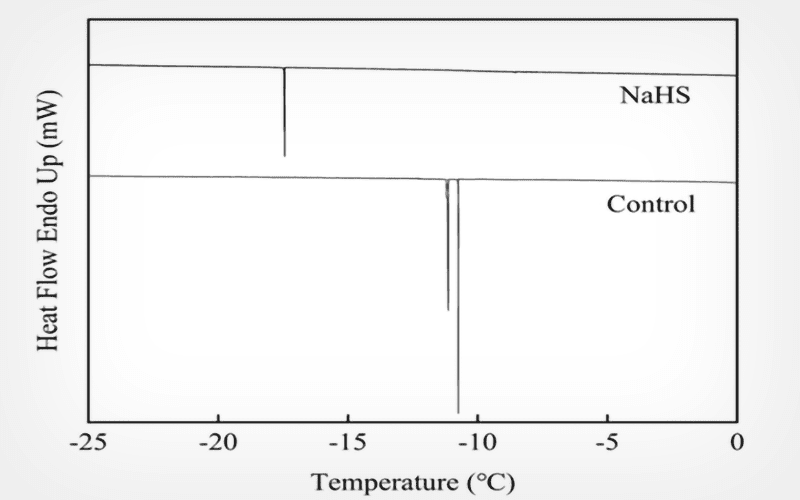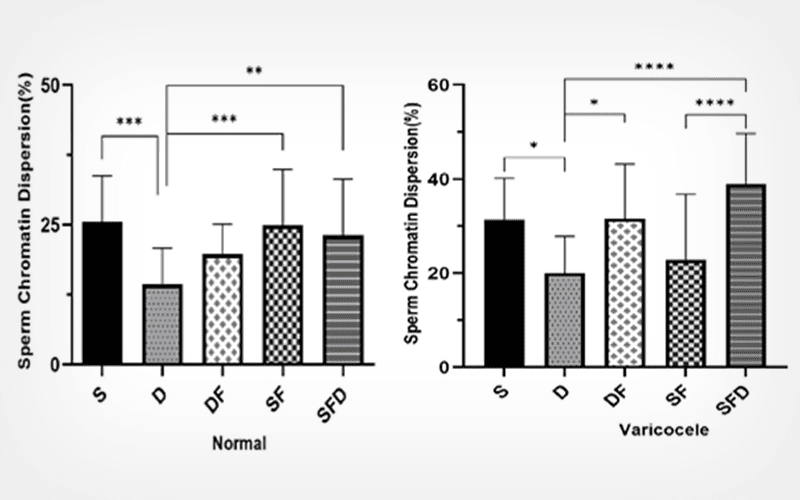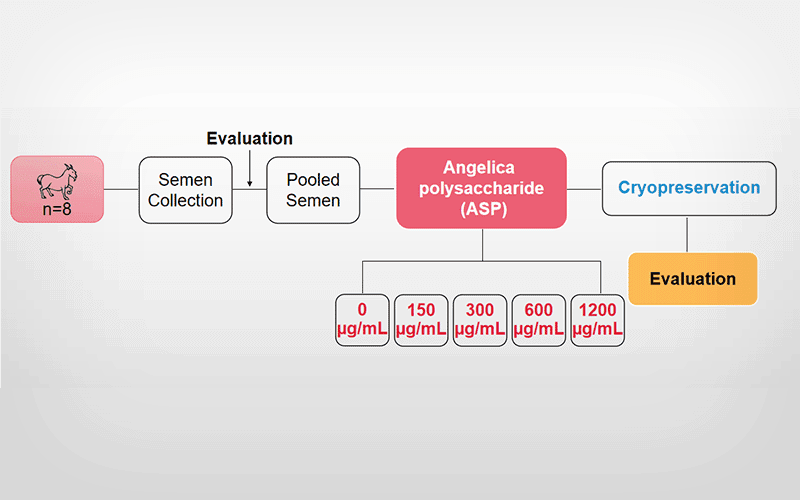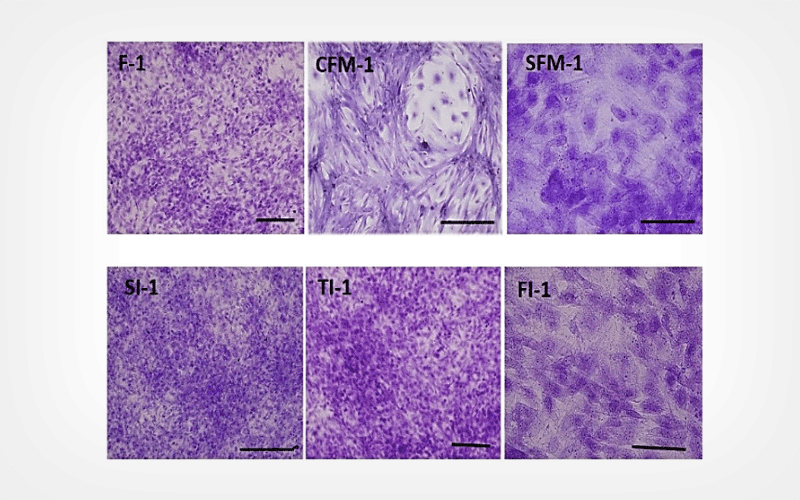CryoLetters Volume 46 - Issue 2
CryoLetters 46 (3), 143-163 (2025)
© CryoLetters, editor@cryoletters.org
doi.org/10.54680/fr25310110112
PERSPECTIVE: Challenges and recent progress on the use of cryobiotechnology for conserving Brazilian native plants
Georgia Pacheco*, Marcela Gomes Vianna-Almeida, Renata de Oliveira Garcia and Elisabeth Mansur
- Plant Biotechnology Center, Rio de Janeiro State University, Brazil
*Corresponding author’s E-mail: georgiappacheco@gmail.com
Abstract
Brazil is a megadiverse country with continental dimensions. It is long acknowledged as the richest country in plant diversity, encompassing approximately 20% of the world’s flora, with more than 50,000 species of plants, algae and fungi distributed in six major biomes, including two biodiversity hotspots. However, significant environmental challenges, primarily driven by climate changes and intensive, non-sustainable land use practices, have led to widespread deforestation, habitat reduction and, consequently, shifts in species distribution, genetic erosion and increased vulnerability. Considering the high rates of endemism and the global economic value of numerous Brazilian native species as crops and wild relatives, ornamentals and medicinal plants, cryopreservation emerges as a fundamental ex situ complementary strategy to safeguard its plant genetic resources. This article aims to provide a comprehensive overview of cryopreservation of native plants in Brazil during the past decade, which shows that more than 85 species from 23 families have been cryopreserved. Methods for assessing cryoinjury at the morphophysiological, biochemical, molecular and metabolic levels are reviewed. The main challenges, as well as future perspectives for the cryopreservation of Brazilian floristic diversity, are also discussed.
Keywords: climate crisis; cryopreservation; deforestation; endemic species; in vitro conservation

CryoLetters 46 (3), 164-171 (2025)
© CryoLetters, editor@cryoletters.org
doi.org/10.54680/fr25310110312
H2S signal enhances storage globulin hydrolysis, embryo supercooling and freezing tolerance of hydrated brassica (Brassica oleracea) seeds
Yingying Han*, Jie Wang, Liangbo Li, Danping Song, Weijie Li and Baolin Liu
- Institute of Biothermal Science and Technology, School of Health Science and Engineering, University of Shanghai for Science and Technology, 516 Jungong Road, Shanghai 200093, China
*Corresponding authors’ E-mails: yyhan2007@163.com and blliuk@163.com
Abstract
Background
Seed storage globulins have two subunits linked by disulfide bonds. Earlier studies suggested that globulin hydrolysis may enhance the freezing tolerance of hydrated seeds. As a donor for H2S, NaHS can act as a nucleophile to break the disulfide bond of proteins and convert sulfhydryl group (-SH) of cysteine to the persulfide group (-SSH), which will promote formation of S-persulfidation and de-polymerization of seed globulins.
Objective
To examine the role of the H2S signal pathway in the freezing tolerance of hydrated brassica seeds.
Materials and methods
Hydrated brassica (Brassica oleracea) seeds were treated with 5 mM NaHS to reduce the disulfide bonds of seed globulins and its effect on seed freezing tolerance was investigated.
Results
NaHS treatment increased embryo supercooling as determined by differential scanning calorimetry (DSC) and seed survival upon slow cooling (control vs NaHS, 30.0% vs 45.3%). NaHS treatment resulted in a significant increase of sulfhydryl groups of storage globulin, indicating the reduction of disulfide bonds. The 2D electrophoresis showed the depolymerization of storage globulins and the accumulation of small polypeptides. In addition, NaHS treatment increased the contents of ascorbate and glutathione for anti-oxidation.
Conclusion
The H2S signal pathway is likely involved in the freezing tolerance of hydrated brassica seeds via the de-polymerization and hydrolysis of seed storage glubins, as well as the regulation of supercooling.
Keywords: Brassica oleracea; embryo supercooling; freezing tolerance; H2S signal; storage globulins

CryoLetters 46 (3), 172-175 (2025)
© CryoLetters, editor@cryoletters.org
doi.org/10.54680/fr25310110512
Protective effects of hydrogen (H2) on boar sperm upon freeze-thaw process
Shushan Zhang1,2#, Shang Ren3#, Caifeng Wu1,2, Jianjun Dai1,2*, Yunhai Zhang3 and Defu Zhang1,2
- Institute of Animal Science and Veterinary Medicine, Shanghai Academy of Agricultural Sciences, Shanghai, China
- Shanghai Engineering Research Center of Breeding Pig, Shanghai, China
- College of Animal Science and Technology, Anhui Agricultural University, Hefei, China
*Corresponding authors’ E-mails: blackman0520@126.com and yunhaizhang@ahau.edu.cn
#Contributed equally as lead authors
Abstract
Background
Antioxidant is important to prevent ROS attack in boar sperm during the freezing-thawing process.
Objective
To study whether hydrogen (H2) could improve the survival of boar sperm upon the freeze-thaw process.
Materials and methods
The effects of hydrogen in pre-diluent, freezing extender and thawing solution were investigated. Sperm viability, progressive motility, acrosomal integrity, mitochondrial activity, as well as the levels of malonaldehyde (MDA) and total antioxidant capacity (T-AOC) were measured.
Results
Hydrogen in pre-diluent, freezing extender and thawing solution significantly improved sperm quality parameters (including sperm viability, progressive motility, acrosomal integrity and mitochondrial activity), increased total antioxidant capacity (T-AOC) and decreased malondialdehyde (MDA) of post-thawed boar sperm. The use of hydrogen in all three solutions improved the quality of post-thawed boar sperm.
Conclusion
Hydrogen protects boar sperm against ROS-induced damages during cooling and the freezing-thawing process.
Keywords: antioxidant; boar sperm; cryopreservation; hydrogen (H2).

CryoLetters 46 (3), 176-185 (2025)
© CryoLetters, editor@cryoletters.org
doi.org/10.54680/fr25310110712
Sperm biological characteristics improves when sperm preparation is done before cryopreservation in varicocele patients
Moones Vasiee1,2, Azam Agharahimi2*, Mohammad Ali Khalili2, Amirhossein Rahavian3 and Nahid Aboutaleb4*
- Department of Physiology, School of Medicine, Iran University of Medical Sciences, Tehran, Iran
- Research and Clinical Center for Infertility, Shahid Sadoughi University of Medical Sciences, Yazd, Iran
- Urology Department, Shahid Sadoughi University of Medical Sciences, Yazd, Iran
- Physiology Research Center, Iran University of Medical Sciences, Tehran, Iran
*Corresponding authors’ E-mails: aboutaleb.n@iums.ac.ir and 63rahimi@gmail.com
Abstract
Background
Sperm cryopreservation is a process that involves preserving sperm cells for future use. Prior to freezing, sperm preparation methods like density gradient centrifugation (DGC) are typically performed to improve sperm quality.
Objective
To compare two sperm freezing methods, with and without seminal fluid, in normal and varicocele patients, focusing on reactive oxygen species (ROS) levels and sperm DNA fragmentation.
Materials and methods
Forty samples from individuals with normal (n=20) and varicocele (n=20) were collected through ejaculation. Each sample was divided into two groups for analysis. One group DGC was performed pre-freezing and another group DGC was done post-freezing. Evaluations were conducted on sperm parameters, DNA fragmentation index, and ROS generation.
Results
In the normal group, progressive motility in Fresh Freeze DGC (19.55 ± 12.90) was lower than Fresh DGC Freeze (32.45 ± 12.86), although viability, morphology, DNA fragmentation and ROS production remained unchanged. Fresh Freeze DGC (44.25 ± 11.38) and Fresh DGC Freeze (53.58 ± 11.41) differed substantially in the varicocele group for viability assessment, whereas other parameters did not change in this group.
Conclusion
It is recommended to prepare sperm before freezing to avoid potential issues with sperm not tolerating the centrifugation process. Removing seminal fluid before freezing can lead to better sperm parameters in both normal and varicocele groups.
Keywords: density gradient centrifugation; sperm cryopreservation; sperm DNA fragmentation; ROS; varicocele

CryoLetters 46 (3), 186-196 (2025)
© CryoLetters, editor@cryoletters.org
doi.org/10.54680/fr25310110212
Protective effect of Angelica sinensis polysaccharide (ASP) on cryopreservation-induced damage to semen of Chongming white goats
Keqin Zhang1,2, Liang Zhang1, Jie Chai1, Lijuan Zhang1, Lin Cha1, Ketian Wang3, Lidan Zhang1, Lingwei Sun4* and Hongmei Pan1,2*
- Institute of Genetic Breeding & Reproduction, ChongQing Academy of Animal Sciences, Chongqing 402460,China
- National Center of Technology Innovation for Pigs, Chongqing 402460, China
- NeiJiang Academy Of Agricultural Sciences dedecms, Neijiang 641000, China
- Institute of Animal Husbandry & Veterinary Medicine, Shanghai Academy of Agricultural Sciences, Shanghai 201106, China
*Corresponding authors’ E-mails: sunlingwei1987@126.com and panhm_2118@163.com
Abstract
Background
Cryopreservation of goat sperm is important for goat breeding and population expansion. However, goat spermatozoa are generally less resistant to freezing and the fertilization rate of spermatozoa is lower than that of fresh semen.
Objective
To investigate the effect of different concentrations of Angelica sinensis Polysaccharide (ASP; 0, 150, 300, 600, and 1200 μg/mL) on post-thaw quality, motility characteristics, and oxidative markers of Chongming white goat sperm.
Materials and methods
Fresh semen from Chongming white goat (n=8; mean age, 3–5 years of age) was collected, evaluated, and divided into five treatment groups corresponding to different ASP concentrations. Post-thaw sperm motility kinematics, plasma and acrosomal membrane integrity, and mitochondrial activity were evaluated. Additionally, this study evaluated markers of antioxidant defense, including malondialdehyde (MDA), reactive oxygen species (ROS), superoxide dismutase (SOD), glutathione peroxidase (GSH-Px), nitric oxide (NO) content, total antioxidant capacity (T-AOC), as well as 5-methylcytosine (5-MC) level.
Results
The addition of 600 μg/mL ASP enhanced sperm viability and sperm kinematic parameters, improved integrities of acrosome and plasma membrane, and increased mitochondrial activity as compared with the control. Regarding oxidative markers, ASP-added groups had reduced ROS, MDA, and NO levels in semen compared to controls. The ASP 600 μg/mL group had the lowest levels of oxidative markers, and adding 600 μg/mL ASP significantly increased SOD, catalase (CAT), and GSH-Px activities in semen. There were significant increases in T-AOC levels in all ASP-added groups versus the control group. Additionally, the 300 and 600 g/mL ASP-groups showed significantly lower levels of DNA methylation 5-MC than the control groups.
Conclusion
Adding 600 μg/mL ASP to the Chongming white goat low-temperature diluent improves the motility characteristics and antioxidant markers of Chongming white goat semen.
Keywords: Angelica sinensis polysaccharide (ASP); antioxidant capacities; Chongming white goat; motility parameters; semen cryopreservation

CryoLetters 46 (3), 197-206 (2025)
© CryoLetters, editor@cryoletters.org
doi.org/10.54680/fr25310110412
Efficient procedure for human adipose tissue cryopreservation without specialized freezing equipment
Banafsheh Heidari1, Hanieh Jafary2, Hannaneh Golshahi3, Haleh Soltanghoraei4, Soroosh Shams1, Azadeh Soltani4 and Seyed Mehdi Tabaie5*
- Department of Photo Healing and Regeneration, Medical Laser Research Center, Yara Institute, ACECR, Tehran, Iran
- Department of Biology, Science and Research Branch, Islamic Azad University, Tehran, Iran
- Department of Tissue Engineering, Avicenna Research Institute, ACECR, Tehran, Iran
- Reproductive Biotechnology Research Center, Avicenna Research Institute, ACECR, Tehran, Iran
- Department of Medical Laser (MLRC), Medical Laser Research Center, Yara Institute, ACECR, Tehran, Iran
*Corresponding author’s E-mail: smtabaie@yahoo.com
Abstract
Background
Adipose tissue grafting is one of the reconstruction methods for damaged tissue repair.
Objective
To develop a convenient procedure for human adipose tissue cryopreservation without any special equipment.
Materials and methods
Adipose tissues were frozen using different combinations of permeating and non-permeating cryoprotectants at a cooling rate of -1°C/min and stored at -20°C for 1, 3, 6 and 9 months. Histo-morphological characteristics, mitochondrial activity, oil ratio (OR) index, survival and differentiation potential of mesenchymal stem cells of thawed adipose tissue were evaluated.
Results
The most damage or degeneration and OR indices of adipose tissues were detected in phosphate-buffered saline without any cryoprotectant at 1, 3, 6, and 9 months after cryopreservation (P≤0.05). The best protection of adipose tissue against freezing damage was observed when using a solution of 0.5 M DMSO + 9% FBS + 0.2 M trehalose (P≤0.05). Similarly, mitochondrial activities of thawed adipose tissues were the highest in the 0.5 M DMSO + 9% FBS + 0.2 M trehalose, but lowest in the phosphate-buffered saline. There was no difference in the stemness and differentiation potential of adipose tissue-derived mesenchymal stem cells among different cryopreservation treatments.
Conclusion
The combination of 0.5 M DMSO, 9% FBS and 0.2 M trehalose has the best protection for human adipose tissue during cryopreservation.
Keywords: adipose tissue; cryoprotectant; freezing

CryoLetters 46 (3), 207-212 (2025)
© CryoLetters, editor@cryoletters.org
doi.org/10.54680/fr25310110612
Iodixanol fortification in freezing extender protects sperm DNA damage and improves antioxidant capacity
Ravi Ranjan1*, Manish Kumar1, Dileep Kumar Swain2, Shiva Pratap Singh1, Suresh Dinkar Kharche1, Manoj Kumar Singh1 and Manmohan Singh Chauhan3
- Animal Physiology & Reproduction Division, ICAR-Central Institute for Research on Goats, Mathura, UP-281122, India
- DUVASU, Mathura, UP-281001, India
- GBPUA&T, Pantnagar, UK-263145, India
*Corresponding author’s E-mail: dr_raviranjan@yahoo.co.in
Abstract
Background
One of the most essential ingredients of artificial insemination (AI) programs is semen processing which needs extender with additives to protect spermatozoa against cold stress during cryopreservation. The selection of cryoprotectant and composition of extenders are of great importance for sperm survival during and after cryopreservation. The addition of small quantities of iodixanol in the freezing extender can protect spermatozoa by altering the glass transition temperature of the mixture and changing the structure of the growing ice crystals.
Objective
To reveal the effect of iodixanol fortification in semen extender on post thawed sperm qualities, DNA intactness and antioxidant status.
Materials and methods
The ejaculates were collected from Barbari goats using artificial vagina method and samples with >80% initial progressive sperm motility were extended with tris-citric acid-fructose diluent. Iodixanol was added to the sperm preparation medium at different concentration (Control, 0 μM; 100 μM; 200 μM; 300 μM and 400 μM). Sperm concentrations were adjusted 400 million per mL and diluted semen was kept for equilibration at 5°C for 4 h before being cryopreserved in liquid nitrogen. Semen samples were evaluated for sperm quality at the pre-freeze and post-thaw stages.
Results
Semen samples fortified with 400 μM iodixanol had improved cryopreservation, with significantly higher motiliy, live sperm count, acrosome integrity and hypo osmotic swelling (HOS) positive spermatozoa compared to the control. In addition, fortified semen had significantly lower sperm MDA and protein carbonyl contents after cryopreservation and greater sperm DNA integrity (fewer TUNEL+ve sperm) and lower mitochondrial membrane potential. Finally, semen fortification resulted in a small improvement in post-cryopreservation kidding rate.
Conclusion
Iodixanol at 400 μM significantly improves post-thaw sperm qualities and fertility in Barbari goat and its value as a freezing extender seems to relate to an enhanced antioxidant capacity.
Keywords: antioxidant capacity; artificial insemination; iodixanol; malondialdehyde; MMP; TUNEL assay







